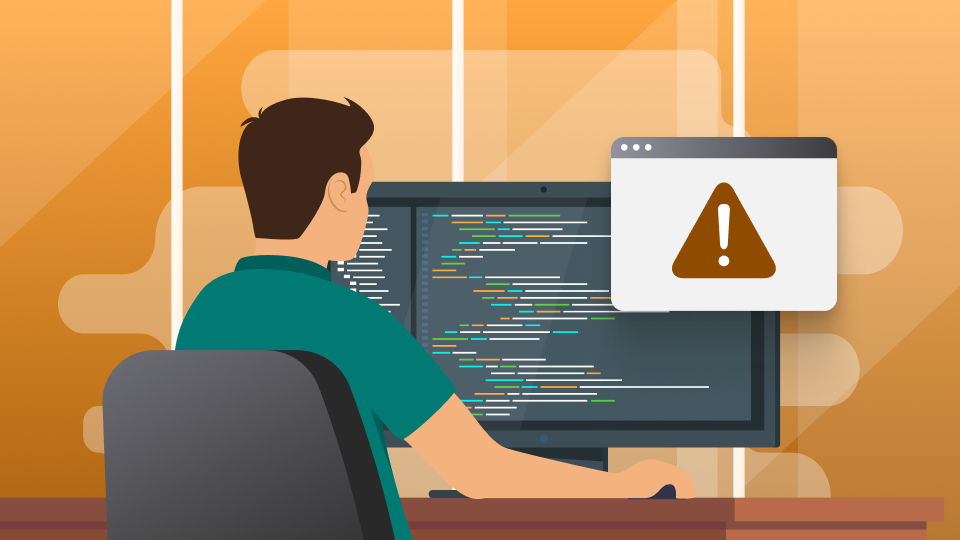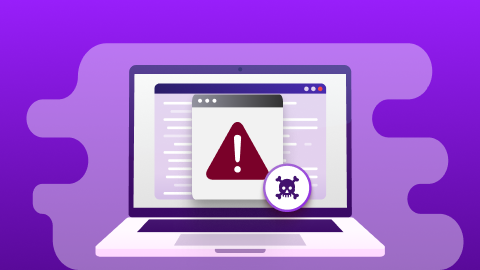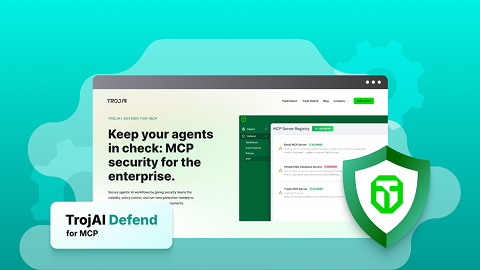Key insights
- AI red teaming is not pentesting with new buzzwords. It probes model behavior, misuse pathways, and failures that arise from how people and systems interact, not just networks and endpoints.
- Generative models expand the attack surface. Prompt injection, jailbreaks, data leakage, and bias are behavioral weaknesses that require adversarial evaluation at scale.
- Automation helps, but humans still break things best. Hybrid programs that combine automated adversarial generation with expert creativity find more meaningful risks.
- Regulation is catching up. Executive directives, risk frameworks, and emerging laws increasingly expect structured adversarial testing of higher-risk AI.
- Treat it like a lifecycle, not an event. Scoping, threat modeling, testing, triage, mitigation, and regression must repeat with every model or policy change.
- Success is measurable. Track exploit success rates, time-to-detect, time-to-mitigate, and safety regressions to show concrete risk reduction.
Why AI red teaming now
Organizations have spent decades hardening networks and applications against determined adversaries. AI systems, however, fail in different, often more human ways. They can be manipulated into revealing secrets, invent credible falsehoods, or produce content that violates policy and law. Worse, the same model can behave safely one moment and fail the next because outputs are probabilistic and highly context dependent.
AI red teaming sits at this intersection of capability and risk. It simulates how real people and automated adversaries might coerce an AI system into unsafe behavior, then feeds those findings back into model alignment, policy, monitoring, and product design. When done well, it becomes a standing capability that closes the loop between what models should do and what they actually do in the wild.
What AI red teaming is (and isn’t)
Red teaming is a structured adversarial assessment of an AI system’s behavior and its surrounding controls. It adopts attacker mindsets, creates realistic scenarios, and measures whether the system resists or fails in ways that matter to the business.
That is distinct from:
- Vulnerability assessment: Cataloging findings via scanning and review, usually without exploitation.
- Penetration testing: Targeted exploitation of infrastructure components within a defined scope and timebox.
- Model evaluation: Scoring quality or accuracy on benchmarks under “normal” conditions.
AI red teaming overlaps with each but focuses on misuse, emergent behavior, and socio-technical harm (failures that arise from how people and systems interact) under adversarial pressure.
Threats shift with the modality
Traditional ML and newer generative systems share risk patterns, but the tactics differ:
- Training-time threats: Data poisoning, contaminated labels, model tampering, supply-chain compromise.
- Inference-time threats: Evasion/adversarial examples, model extraction, membership inference, rate-limited probing.
- LLM-specific threats: Prompt injection and indirection (via data, tools, or retrieved content), jailbreaks, policy evasion through multilingual or coded prompts, sensitive data exfiltration, and content policy violations (e.g., hate, NSFW, illegal instruction).
- Multimodal risks: Image or audio-based jailbreaks, cross-modal inconsistencies, and “context smuggling” through attachments, links, or embedded metadata.
The attacker’s objective can be profit (fraud), disruption (misinformation), or simple curiosity, any of which can have a regulatory, safety, or reputational impact.
Core use cases for AI red teaming
The following are the main use cases for AI red teaming:
- Risk discovery: Elicit failure modes that ordinary testing misses like hallucinations, policy boundary slips, data leaks.
- Resilience building: Raise the bar against poisoning, evasion, and behavioral exploits; verify guardrails under stress.
- Safety and fairness checks: Surface biased or discriminatory outputs across languages, cultures, and demographics.
- Privacy assurance: Test for inadvertent disclosure of personal or confidential data via prompts, tools, and retrieval.
- Operational reliability: Assess behavior under load, conflicting instructions, or adversarial context injection.
- Integration hardening: Probe APIs, plugins, retrieval pipelines, and tool-use chains that extend model reach.
- Regulatory readiness: Produce evidence for internal governance and external oversight that adversarial testing is conducted, documented, and acted upon.
Methods: manual, automated, and hybrid
The following methods used in AI red teaming each have different strengths and limitations:
- Manual red teaming: Expert testers craft nuanced scenarios, chain attacks, and adapt in real time.
Strength: Creativity and contextual judgment
Limitation: Scale - Automated red teaming: Programmatic generation of adversarial prompts, fuzzing of instructions, and large-scale exploration.
Strength: Breadth and repeatability.
Limitation: Can overfit to known bad patterns or produce noise. - Hybrid approaches: Automation is used to explore widely; humans are used to go deep on high-impact seams, triage results, and design mitigations.
Strength: This balanced approach consistently yields the best signal-to-noise.
Pro tip: Don’t rely solely on static prompt lists. Attackers read those, too. Blend seeded lists with dynamic generators and scenario-specific mutations.
A practical, repeatable process
AI red teaming works best when it is part of systematic testing of AI systems. Here are the steps to build a repeatable process for AI red teaming.
1) Frame the exercise
- Define the system under test (model version, data sources, tools, user roles).
- Align on harm categories (e.g., data leakage, illicit guidance, bias, IP misuse, safety-critical error).
- Establish success criteria and stopping conditions (e.g., “no PII spill across 10k adversarial trials”).
2) Threat model the surface
- Map inputs (user, retrieval, files), outputs, and control points (filters, moderation, rate limits).
- Identify high-value targets like secrets, safety constraints, decision thresholds, and compliance obligations.
3) Design scenarios
- Create representative user journeys and misuse stories, such as insider with privileges, external spammer, curious power user, or determined fraudster.
- Include multilingual, multimodal, and tool-use variations.
4) Execute safely
- Test in a controlled environment (mirrored datasets, gated APIs, strict logging).
- Capture full telemetry, including prompts, context windows, tool calls, outputs, classifier verdicts.
5) Triage & analyze
- Score by severity (harm potential), reproducibility, exploitability, and detection coverage.
- Convert failure cases into unit tests, policy updates, training data, and monitoring rules.
6) Mitigate & regress
- Apply layered mitigations like prompt hardening, input/output filtering, retrieval sanitization, rate limiting, fine-tuning, and policy changes.
- Re-run the same scenarios after each change to catch regressions. Track deltas.
7) Institutionalize
- Bake red teaming into the SDLC. It should be part of pre-release gates, post-incident reviews, and periodic campaigns aligned to major model/data updates.
Q&A: quick hits for leaders and builders
Need to know the most important takeaways for leaders and builders? Read on.
Q: Is red teaming only for generative AI models?
A: No. Classifiers and forecasters are vulnerable to evasion and poisoning; recommendation systems have integrity and safety risks. Techniques differ, but the adversarial mindset is universal.
Q: How is “pass/fail” defined when outputs vary?
A: Use rates, not absolutes, such as attack success rate, unsafe-output rate, and severity-weighted risk scores. Require statistically meaningful sample sizes and confidence intervals.
Q: Won’t automated tools find everything?
A: They find many things quickly, but the highest-impact failures often come from human-crafted chains, domain context, or multilingual nuance. Use automation to widen the search and humans to raise the ceiling.
Q: What belongs in the board packet?
A: Top risks and trendlines such as change in exploit success rate, time-to-mitigation, presence/absence of PII leakage, compliance coverage, and notable regressions since the last release.
Measuring what matters
Treat AI red teaming like any other control family with clear metrics:
- Attack Success Rate (ASR): Proportion of adversarial attempts that bypass guardrails by category.
- Time to Detect (TTD) / Time to Mitigate (TTM): Latency from first unsafe behavior to detection and to fix.
- Residual Risk Index: Severity-weighted open issues after mitigation.
- Regression Rate: percentage of previously fixed failures that reappear after updates.
- Coverage: Proportion of prioritized harms, languages, modalities, and integrations exercised in the latest cycle.
Dashboards that track these over time demonstrate real risk reduction and justify investment.
Governance and the regulatory drumbeat
Expect adversarial testing to become table stakes:
- U.S. executive directives on AI safety call for red-team style evaluations of higher-risk systems and reporting of red-team results for certain model classes.
- NIST’s AI Risk Management Framework strongly encourages adversarial resilience across governance, mapping, measurement, and management functions, even when “red teaming” isn’t named outright.
- The EU AI Act requires pre-market evaluation and documented adversarial testing for higher-risk systems.
- California’s Transparency in Frontier Artificial Intelligence Act (SB 53), signed in September 2025, establishes new transparency and safety obligations for advanced AI developers, signaling that state-level regulation is also moving toward structured testing and disclosure expectations.
The practical takeaway: even if you’re not directly regulated today, your partners, customers, and auditors will increasingly ask for evidence that adversarial testing is routine, rigorous, and remediated.
Common pitfalls and how to avoid them
When implementing an AI red teaming program, make sure to avoid these common pitfalls:
- Static playbooks. Reusing the same prompt list produces diminishing returns. Remedy: Rotate themes, localize across languages, and vary modalities and tool chains.
- Testing only the model. Many failures originate in retrieval pipelines, plugins, and glue code.
Remedy: Treat the full system as the unit of analysis. - Late engagement. Dropping a red team into a release week ensures friction and limited fixes.
Remedy: Schedule campaigns ahead of major model, data, or policy changes. - Siloed ownership. Security finds issues nobody can fix; product owns fixes without context.
Remedy: Create a cross-functional safety council that includes product, security, legal, and data science. - No regression harness. Missing drift as models evolve.
Remedy: Turn every confirmed failure into an automated evaluation and gate releases on it. - Overreliance on tooling. Tools accelerate; they don’t absolve judgment.
Remedy: Invest in people, playbooks, and post-mortems.
Building the team
An effective AI red team is multidisciplinary and includes the following members:
- ML specialists to interpret model behavior and design targeted mitigations.
- Security engineers to chain exploits across systems and enforce safe test environments.
- Domain experts to craft realistic, high-impact scenarios (finance, health, safety-critical).
- Policy and legal to map harms to obligations and define enforcement boundaries.
- UX and data to improve prompts, instructions, and monitoring signals.
Diversity of backgrounds and lived experiences is not just nice to have, it’s a source of adversarial creativity that uncovers the unknown unknowns.
Implementation guide: start small, scale smart
Implementing an AI red teaming program may seem daunting at the beginning, but if you start small and scale thoughtfully, you will soon find success. The following steps will help you build a successful implementation:
- Pick one consequential harm category (e.g., sensitive data leakage) and one target surface (e.g., chat with retrieval).
- Instrument telemetry to capture prompts, contexts, tool calls, and outputs with privacy controls.
- Seed an initial set of adversarial prompts and scenario templates; add multilingual variants.
- Automate breadth (programmatic fuzzing/generation) and assign humans to deepen promising testing seams.
- Score, triage, remediate, and memorialize each confirmed failure as a regression test.
- Report trendlines monthly, then expand to additional harms and modalities each quarter.
- Institutionalize with policy (release gates), budget (dedicated headcount), and rhythm (campaigns tied to model updates).
Within a few cycles, you’ll have a living evaluation suite and a measurable reduction in behavioral risk.
Q&A: policy and practice
The following guidelines will help you establish AI red teaming best practices.
Q: How do we avoid creating “how-to” guides for attackers?
A: Use responsible disclosure. Share specifics internally; publish aggregate patterns and defenses. Limit dissemination of novel exploit chains until mitigations are deployed.
Q: What if a safety fix hurts product quality?
A: Make tradeoffs explicit. Use A/B evaluations that consider both safety metrics and user value. Where possible, prefer precision defenses (context sanitization, targeted classifiers) over blunt denials.
Q: How often should we run campaigns?
A: At minimum, around major model, data, tool, or policy changes, with a standing quarterly sweep. High-risk systems merit continuous automated adversarial evaluation.
The leadership mandate
AI red teaming has graduated from experimental to expected. It is the discipline that keeps pace with evolving models, new integration patterns, and increasingly creative adversaries. Leaders should treat it like any other critical control: fund it, formalize it, and measure it.
If you’re getting started, begin narrowly and iterate. If you already have a program, broaden your coverage, strengthen your regression suite, and align your metrics to business risk. Above all, make it a habit, not a headline.
TL;DR: Adversaries won’t wait for your next release cycle. Your red team shouldn’t either.
How TrojAI can help
TrojAI offers a best-in-class AI red teaming solution, TrojAI Detect. With support for agentic and multi-turn attacks, TrojAI Detect automatically red teams AI models, applications, and agents to safeguard model behavior and deliver remediation guidance at build time.
Our best-in-class security platform for AI also includes TrojAI Defend, GenAI Runtime Defense solution that protects enterprises from threats in real time.
By assessing model behavioral risk during development and protecting it at run time, we deliver comprehensive security for your AI models, applications, and agents.
Want to learn more about how TrojAI secures the world's largest enterprises with a highly scalable, performant, and extensible solution?











